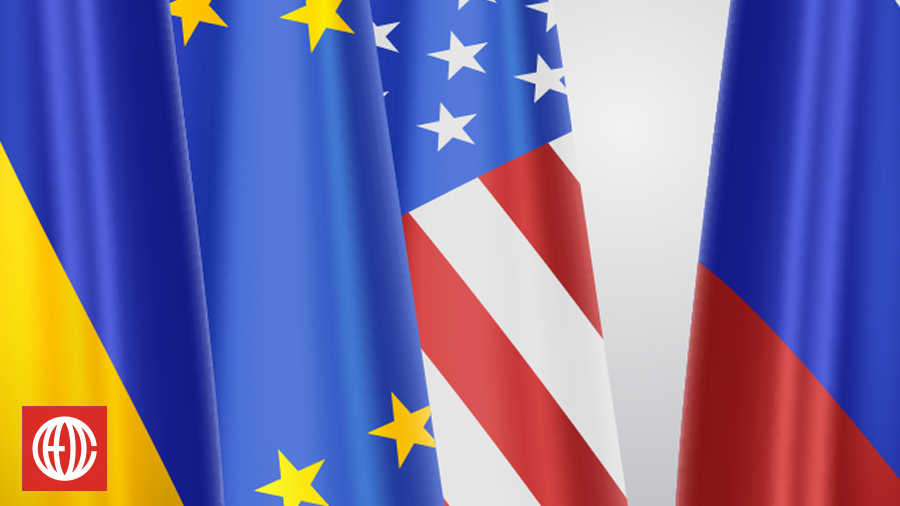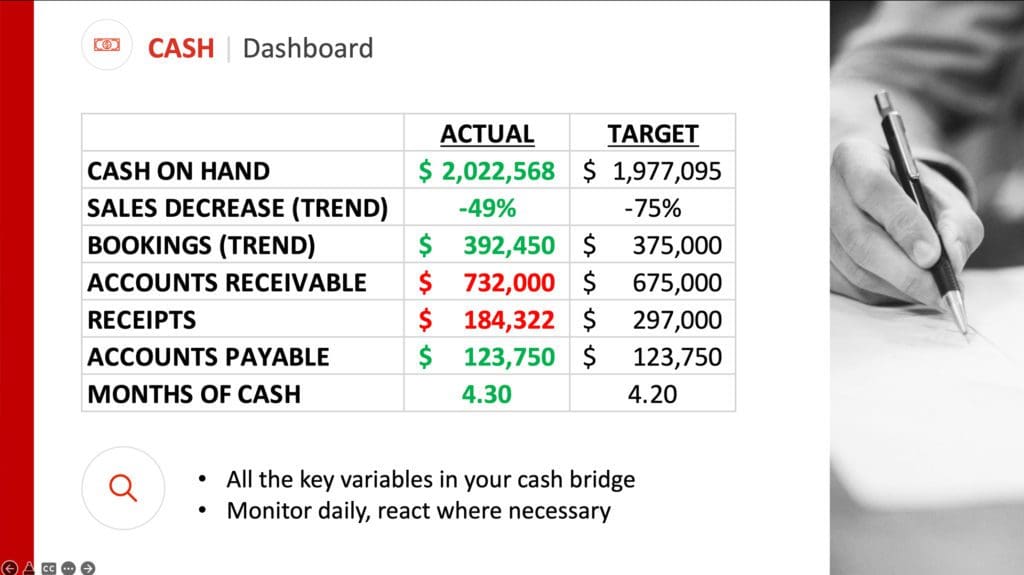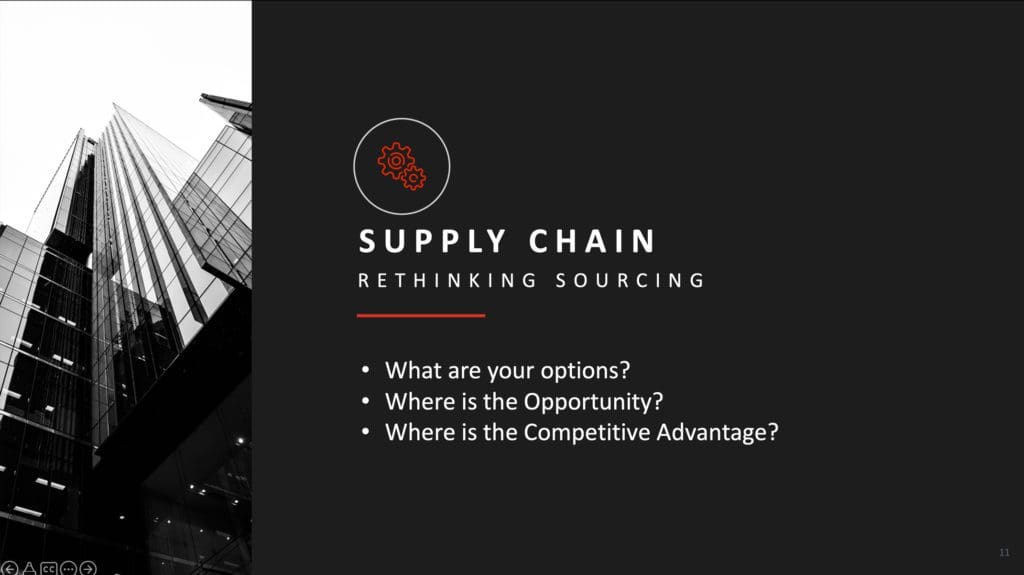
On February 24, 2022, Russia invaded Ukraine, beginning an onslaught of violence and terror. Millions have fled their homes as troops and airstrikes destroy major cities like Kyiv, Maripol, and Kharkiv.
Since then, the ruble tumbled 40%. Gas prices reached record highs, averaging $4.32 per gallon. Iconic American brands like Starbucks, Coca-Cola, and McDonalds have shut down operations in Russia in protest, along with hundreds of other companies in a variety of sectors, from credit cards like American Express and Visa, entertainment giants like Disney and Netflix, and major consulting firms like McKinsey.
Russia is the 12th largest economy in the world, and these economic sanctions represent a major supply shock just as the global economy had begun to recover post-COVID-19.
What does this mean for your business?
I invited international relations expert Chris Larkins, Sr. Partner and Chief Growth Officer at CEO Coaching International, and Rafael Paniagua, former CEO of industrial giant ABB, to discuss the potential short-and long-term implications of the Ukraine-Russia conflict as it pertains to the U.S. economy and business.
Watch the full session here, or read on for our key insights:
3 critical steps for growth during a global crisis
If there’s one thing we’ve learned from the COVID-19 crisis, it’s that you can have a growth mindset even when the world is in upheaval. The time is now to make sure you’re running your business as effectively as possible, so you can ride out the storm in a way that puts you at a competitive advantage at the other end.
“The first thing we need to think about is how to plan not just for today, but for the long-term,” says Paniagua. “We’re not talking about a crisis of days or weeks. This conflict could be months or years, and we will continue to see its impact afterwards.”
Here are three best practices that we’ve learned over the last two years to help your business grow during a global crisis:
1. Be ready to build a cash bridge
“Cash is the lifeblood of every business,” says Larkins. “This is the opportunity to ask what scenarios might affect your cash, and how you can secure yourself.”
You need to regularly map out multiple scenarios and see what steps you need to take to build a bridge from here to there so you can go into offense-mode instead of playing defense. With the Russia-Ukraine conflict, you need to ask yourself:
- What happens if the conflict ripples outward, and my European customers aren’t able to pay?
- How do rising gas and oil prices impact the rest of my supply chain?
- What happens if inflation continues to rise, impacting the overall cost of doing business?

“A business typically survives and thrives with about four months of cash on hand,” advises Larkins. “Map out the worst-case scenarios that would dwindle your cash stockpile, so you can make different decisions to run that cash. These scenarios are going to come up quickly, and you need to be able to execute immediately in response. Don’t wait for the headlines to tell you it’s time to flip a switch.”
Now is the time to tap into any credit you might need. You can always pull back if you need to.
Build a cash dashboard that allows you or your CFO to track your cash more carefully in a time like this. It could be daily or several times a week, but you need to get real-time insights into how you’re doing compared to your targets set in that worst-case scenario planning.

Says Larkins, “Don’t put yourself in a position to be surprised. You want to stay on top of this so that one day your CFO doesn’t say in your forecast that you’re going to run out of cash in 30 days.”
2. Evaluate your pricing strategy
We’re currently experiencing the highest inflation rates in the United States in recent memory. In fact, inflation jumped to 7.5% in the United States, a 40-year-high. “In my observation across 450 clients at CEO Coaching International, the clients during COVID and the supply chain crunch that were proactive on pricing and took calibrated risks consistently did better,” says Larkins. “They put themselves in a position whereby they had cash on hand to take even bigger bets.”
As you talk about price increases, you may encounter resistance from the rest of your executive team or your sales team. But you should be asking yourself:
- How many price increases have you absorbed, and how does that inform your approach to your customers?
- How do you know if you’ve raised prices enough?
- Is your cost plus model still serving you?
- What competitive advantage would enable value pricing?
- If pricing is inflexible, can you win on terms and conditions?
Says Paniagua, “You’re going to have to be ready for major economic changes, especially the consequences of energy and commodity prices increasing in Europe. Copper, chemical products, and energy prices have multiplied by five or ten times in most European countries, which makes it completely unaffordable to continue to price the way you always have.”
Now is the time to rely on your key relationships, and trust in the value you’ve created for your customers.
3. Manage your supply chain
Remember the old adage that when a butterfly flaps its wings in China, it rains in Chicago?
Managing your supply chain effectively during a crisis is exactly like that. As we start to feel the effects of the Russia-Ukraine war on supply sourcing after two years of a major supply chain crunch, it’s more important than ever to understand where every single material comes from and how you’re depending on Russia or Europe and shore that up.
“You need to be prepared for change, and be willing to be dynamic in your operations,” says Paniagua. “Things are going to come quickly, and you need to make sure your processes and your systems are strong so you can support your teams and react faster than your competitors.”

Create a comprehensive map of every material, where it comes from, and how much it costs to get from Point A to Point B.
“This is your opportunity to be disruptive,” says Larkins. “I often hear questions like, ‘Wouldn’t it be nice if more companies made products closer to home, in the United States?’ It’s often met with, ‘We just can’t disentangle from Asia.’ Well, what if you could? I encourage you to challenge your point of view.”
If you don’t look at this question, then your competitors will. Your product might cost more to make in the United States or Latin America, but you can offset those costs by the fact that your container won’t be sitting for eight weeks in L.A. or lower continental trucking costs.
You need to disrupt yourself and your operations.
In every crisis exists an opportunity
What may have worked before won’t continue to work in the future. The world continues to change as we navigate the Russia-Ukraine crisis, and you’ll need to challenge your assumptions about your business model if you want to continue to grow.
“I want to encourage every CEO to gather their teams and ask themselves, ‘If we were going to start a business from scratch today, what would we stop doing, and what would we do differently?’” says Larkins. “Tomorrow’s winners are the ones who are going to challenge these assumptions first.”
A Dedicated Executive Coach for CEOs Can Help You Through Challenging Times
Navigating your company through this crisis won’t be easy. But we’re here to help at CEO Coaching International.
Interested in learning how one-on-one coaching with our world-class coaches can benefit you? We are offering a free coaching session to any CEO* who doesn’t have a coach and would like to talk to one. If that’s you, book a call with Lori Roediger, Director of Client Success, via her Calendly:
*Due to the nature and focus of our coaching services, we must limit this offer to CEOs of companies with at least $5mm in annual sales.
– Webcast recorded live on Friday, March 11, 2022
About CEO Coaching International
CEO Coaching International works with CEOs and their leadership teams to achieve extraordinary results quarter after quarter, year after year. Known globally for its success in coaching growth-focused entrepreneurs to meaningful exits, CEO Coaching International has coached more than 1,000 CEOs and entrepreneurs in more than 60 countries and 45 industries. The coaches at CEO Coaching International are former CEOs, presidents, or executives who have made BIG happen. The firm’s coaches have led double-digit sales and profit growth in businesses ranging in size from startups to over $10 billion, and many are founders that have led their companies through successful eight, nine, and ten-figure exits. Companies working with CEO Coaching International for two years or more have experienced an average revenue CAGR of 31% (2.6X the U.S. average) and an average EBITDA CAGR of 52.3% (more than 5X the U.S. average).
Learn more about executive coaching | Meet our world-class coaches





